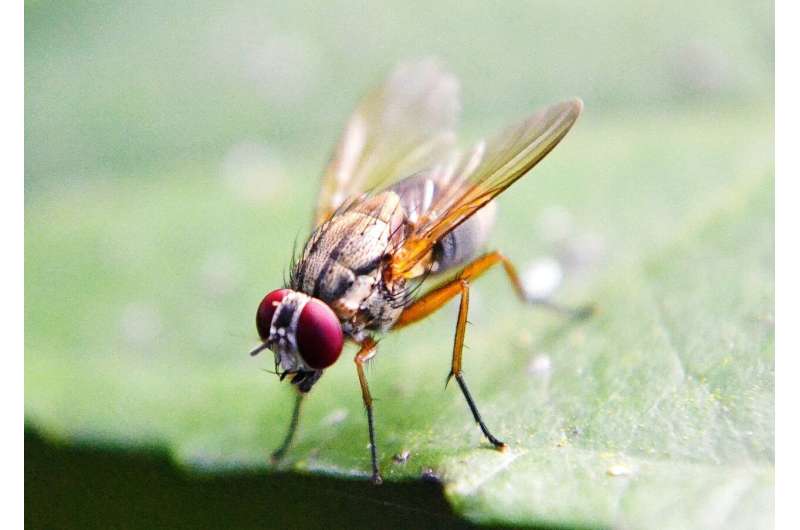August 15, 2019 report
Research: Previously unknown aspect of cell internalization during embryonic development

A team of researchers from Aix Marseille Université and CNRS, the Turing Centre for Living Systems, the University of Chicago and Collège de France has found a previously unknown aspect of cell internalization that occurs during embryonic development in the fruit fly. In their paper published in the journal Nature, the group describes their study of embryonic development in Drosophila melanogaster—the common fruit fly—and what they learned from it. Kristen Panfilio with the University of Warwick has published a News and Views piece outlining the work by the team in the same journal issue.
As Panfilio notes, a process called morphogenesis happens during embryonic development, during which body formation occurs. As she further notes, in most instances, a lot of tissue remodeling happens. As just one example, during this process, cells that will form muscle tissue actually move from an outer part of the early embryo to a more inner part by the end of morphogenesis. In this new effort, the researchers report that they found an aspect of this process in the fruit fly that had not been seen before.
In their study, the researchers found that there are two endodermal regions inside fruit fly eggs during embryonic development—the primordium region and the propagation region. They found that cells in the primordium region secrete a protein called Fog, which binds to its associated receptor. When such binding occurs, a protein called myosin II is activated. The introduction of this protein was found to create contractile forces that assist with internalization, the movement of tissue from outer to inner regions. They also noted that adherens junctions allowed for coupling and transfer of forces between cells. They further noted that the primordium region was involved in transmitting mechanical stress to cells in the propagation region, which resulted in pushing parts of that region upward toward the shell barrier. And those cells that were pushed up were found to build up myosin II. The researchers also found that the whole process repeats until morphogenesis is complete.
More information: Anaïs Bailles et al. Genetic induction and mechanochemical propagation of a morphogenetic wave, Nature (2019). DOI: 10.1038/s41586-019-1492-9
Journal information: Nature
© 2019 Science X Network




















